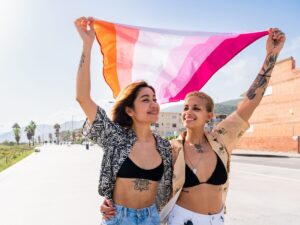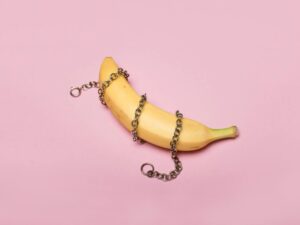If you’ve been on the internet for a long time, you are probably aware of the ‘horse girl’ myth. For a more definitive definition, Urban Dictionary states that a horse girl “wears t-shirts with horses on them and tapered denim pants. They have long hair in which they braid and fasten with a scrunchie, will gallop in gym class and is only friends with other girls who like horses, looking down on you because you are not a horse.”
To be a ‘horse girl’ is to be a joke, at least on the internet. There are many memes and skits online where the punchline is the blatant weirdness of these girls who wear plaid and denim, running around like they are in a show-jumping competition. A self-proclaimed horse girl even asked men on Reddit why they refused to date horse girls, and the responses blew up online. The mutual answer added a deeper layer to this stereotype. Many claimed horse girls came from privileged backgrounds, were pretentious with daddy issues, and were all just crazy. One person even claimed that the poster was attempting to learn how to hide her ‘crazy’.
Horse-riding is incredibly female-orientated. Around 80 per cent of riders are female and are often viewed as a feminine sport, despite being one of the most dangerous. And the entertainment surrounding horses and horse-riding mirrors this demographic, usually around a friendship of a young girl and a horse. And I should know this, as I used to be a horse girl myself. Before I started horse-riding in 2006, I religiously watched horse films and television shows as I traced horse pictures from the internet. I competed in local dressage and show-jumping at my riding school and still have some of the ribbons. I took it very seriously. But, when I reached secondary school, my interest declined. I saw the treatment other fellow horse girls suffered and attempted to distance myself from them, even privately joking with myself and my friends.
I recently wondered why I was so enamoured by these films and what appealed to me about them as a young girl. So I’ve decided to demystify the ‘horse girl stereotype and interpret the themes behind my childhood films and television shows.
This topic might not have come into my mind if I had not had a recent discussion about Dreamwork’s famously underrated classic, Spirit: Stallion of the Cimarron. It’s quite a unique film in its presentation of narration, with emotions reflected through music provided by an unlikely collaboration of Bryan Adams and Hans Zimmer, with occasional voiceovers from Matt Damon. Recently, the franchise has become more focused on a stereotypical friendship between a horse and a young girl. Still, I religiously watched the original from 2002 as a child, and I relate more to the complexity of its themes as an adult.
The title character, Spirit, is a wild horse in the American Wild West who goes through various trials and tribulations to return home. The film perfectly serves as an allegory for freedom as Spirit and Little Creek unite to fight for their freedom against the U.S. Army. Many try to break their spirit and mould them into subservient beings by extreme measures. Still, both refuse to be broken, which is quite a strong message for little girls. Even the relationship between Spirit and Little Creek could be viewed similarly to the friendships seen in every horse film. There seems to be a desire for acceptance as each view themselves as kindred souls joined together in a journey of self-discovery. Their mutual connection creates this admiration from Little Creek as he decides to let Spirit go. Young girls similarly see beauty in a horse’s wild nature and subconsciously wish they could have that freedom themselves.

And just because these films are typically aimed towards young girls does not mean they cannot deal with heavy themes. Rankin and Bass’s 1982 adaptation of The Last Unicorn, in particular, is a standout of my childhood.
In 2020, Wired wrote a feature article revisiting this film and proclaimed it to be a work of art with its focus on loss and regret drawing most of the power of the story. This exploration of loss and regret is a huge component, as the unicorn is the last of her kind and laments the apparent extinction of her species. As I revisited this film as an adult, I found that loss could also be interpreted as the loss of innocence, as the unicorn presents the transitional period for young girls into adulthood. Her introduction places her in a mythical forest, shown in a stunning animation style, where life is more straightforward and innocent. As she embarks on her quest to find the rest of her species, she experiences death, destruction and mortal love. She is transformed into a human woman and given the name Amalthea, the Greek maiden-goddess, and falls in love with a young prince. Throughout, she desires to return to the forest, as outside, there is no place for her, a pure immortal being. Still, she realises the importance of her experiences as she wishes her new friends farewell and disappears back to the forest, a land of imagination and wonder.
In her book, Horse Crazy, Professor Jean Halley describes her connection with horses as a desire to escape from the problems within her family life, like alcoholism. Her horse became her closest friend, someone she could confide in. She further elaborates that this relationship can be empowering for young girls and the media reflects that. Media like these films or television shows like The Saddle Club portrayed the struggles many young girls may face in their lives. Yet, through the humans or the horses, courage is best in the face of adversity. So often, these types of girls struggle to make friends with others and seek a connection with a being that doesn’t judge them, and horses allow them to bring out the best of themselves. Even the theme tune for The Saddle Club proudly exclaims to the world that they are themselves and that is what everyone should strive to be.
It makes the most sense that horse girls often make friends with those who understand them. And there is a sense of attachment to those who have gone through a similar journey, fictional or not. So, it is easy to assume that these films and television shows resonate with young girls who feel they don’t belong with everyone else. Now that I revisit my childhood and the struggles I was going through, I can see those similar feelings reflected in the media I consumed. Girl’s media is often seen as something to ridicule from society, but that doesn’t mean it is worthless and less valued.
















